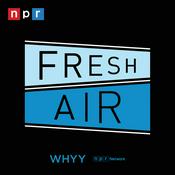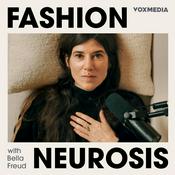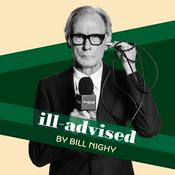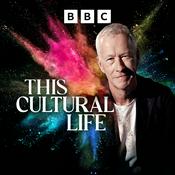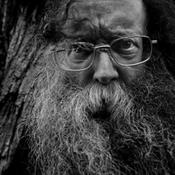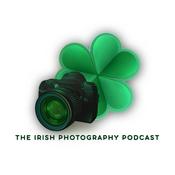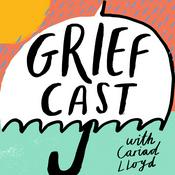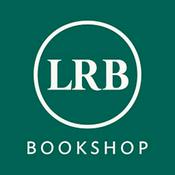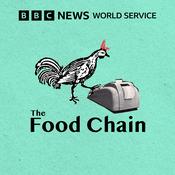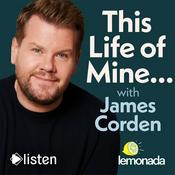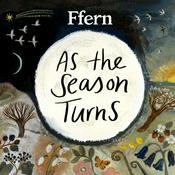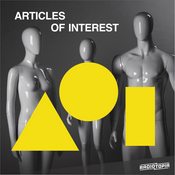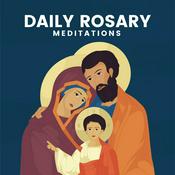584 episodes
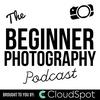
Time To Say Goodbye.
28/10/2025 | 38 mins.
View All The Photos From Todays Photo Walk - https://beginnerphotopod.com/finalphotowalk#596 In today’s episode, Raymond Hatfield shares why letting go of the Beginner Photography Podcast is the decision that could recharge your creativity and rekindle your passion for shooting.If you’re feeling burned out, stuck in a creative rut, or like your camera’s gathering dust, you’re not alone. Many photographers reach a point where obligations overshadow the joy that got them started. Today, Raymond opens up about the hard lessons learned after years of balancing business, creativity, and community, and why it’s sometimes necessary to step back to move forward. By listening, you’ll discover how to protect your passion, recognize burnout, and find the courage to say yes to new opportunities for growth behind the lens.Grab your free 52 Lightroom Presets athttp://freephotographypresets.com/Connect with Raymond! Go from Confused to Confident behind the camera with The Ultimate Photography Education Bundle - https://beginnerphotopod.com/bundle Join the free Beginner Photography Podcast Community at https://beginnerphotopod.com/group Grab your free camera setting cheatsheet - https://perfectcamerasettings.com/ Thanks for listening & keep shooting!

Recipe for Perfect Photos: Mastering Manual Mode Made
21/10/2025 | 27 mins.
#595 In today’s episode of the podcast I share a simple, recipe-inspired approach to mastering manual camera settings. You’ll understand ISO, aperture, and shutter speed from a fresh, food-themed perspective, so you can finally create photos with confidence, not confusion.Ultimate Photography Education Bundle: Step-by-step online photography course — https://beginnerphotopod.com/bundleWhat You’ll Learn:The exposure triangle (ISO, aperture, shutter speed) controls photo brightness and artistic style.Each element is connected, and changes in one require thoughtful adjustments to the others.Mistakes are part of the learning process—experimenting and “tasting” your results is essential.Practical, easy-to-remember ISO settings based on different lighting scenarios are provided, along with advice on aperture and shutter speed choices.Discussion & Reflection QuestionsHow does thinking of camera settings as ingredients in a recipe affect your approach to shooting in manual?Which setting (ISO, aperture, or shutter speed) do you find most challenging, and how might you experiment with adjusting it?What parallels do you see between culinary mistakes and photographic errors, and how can embracing them help you improve?Grab your free 52 Lightroom Presets athttp://freephotographypresets.com/Connect with Raymond! Go from Confused to Confident behind the camera with The Ultimate Photography Education Bundle - https://beginnerphotopod.com/bundle Join the free Beginner Photography Podcast Community at https://beginnerphotopod.com/group Grab your free camera setting cheatsheet - https://perfectcamerasettings.com/ Thanks for listening & keep shooting!

Light Made Simple: 4 Secrets to Instantly Improve Your Photos
14/10/2025 | 50 mins.
#594 In this episode of The Beginner Photography Podcast, we explore the fundamental role that light plays in photography. Enroll in the Ultimate Photography Education Bundle Today - https://beginnerphotopod.com/bundle The learning objectives are clear: listeners should be able to identify and observe how light intensity, direction, color temperature (white balance), and the shape of light (hard vs. soft) influence the mood, feel, and technical quality of their images. Raymond emphasizes that no amount of gear or editing can substitute for a keen awareness of light. He encourages photographers to practice seeing and understanding light even without a camera, and to apply these lessons intentionally in their photography.Key Topics Covered:Element 1 - Intensity of Light:Raymond explains how the brightness of light affects both exposure and the emotional impact of a photo. He gives examples of how harsh midday sun creates energetic, high-contrast scenes, while softer light (such as shade or overcast) leads to more intimate, flattering portraits.Element 2 - Direction of Light:The direction from which light hits a subject dramatically alters mood and visual interest. Through familiar analogies (like campfire stories with a flashlight), Raymond demonstrates how front, side, and back lighting can make images feel flat, dramatic, or mysterious.Element 3 - Color of Light:Color temperature (white balance) is covered in depth, with practical advice on using camera presets (cloudy, tungsten) for consistent results. Raymond illustrates how warm and cool lighting can change both the look and mood of a scene and why setting white balance in camera can simplify editing.Element 4 - Shape of Light (Hard vs. Soft):Using stories from daily life, Raymond helps listeners visualize the difference between small, harsh light sources and large, diffuse ones (like a cloudy sky or a softbox), stressing how soft light is generally more flattering for portraits.Grab your free 52 Lightroom Presets athttp://freephotographypresets.com/Connect with Raymond! Go from Confused to Confident behind the camera with The Ultimate Photography Education Bundle - https://beginnerphotopod.com/bundle Join the free Beginner Photography Podcast Community at https://beginnerphotopod.com/group Grab your free camera setting cheatsheet - https://perfectcamerasettings.com/ Thanks for listening & keep shooting!

Photo Q&A: How to Avoid Wasting Money on Camera Gear
07/10/2025 | 54 mins.
#593 In this month’s Q&A episode of the Beginner Photography Podcast, we answer questions that span both technical and philosophical aspects of photography. The conversation centers around real-world challenges for beginners – such as gear selection, repair decisions, getting comfortable with taking photos of strangers, and figuring out what to do with all the photos taken. A key theme in the episode is demystifying the necessity (or lack thereof) of expensive equipment, highlighting practical approaches, and encouraging photographers to focus on skills and intent over gear.The learning objectives are to help new photographers make confident choices regarding camera bodies and lenses, to understand essential photography concepts like crop sensor vs. full frame, and to gain practical strategies for the creative and ethical dilemmas commonly faced in daily shooting. Core takeaways include: moment and storytelling trump equipment price; knowing your camera, settings, and practicing in diverse scenarios is more beneficial than chasing the latest technology; and sharing or preserving your work can be deeply personal and doesn’t have to be showy.Key Topics Covered:Camera Repairs and Gear Upgrades: Raymond shares a story about repairing his beloved Fuji X Pro 2 instead of upgrading, emphasizing that quality gear is often worth repairing due to build and longevity. Takeaway: Invest wisely, but don’t be afraid to repair rather than replace, and understand when repair makes more sense than a new purchase.The Myth of Expensive Lenses: The episode debunks the belief that only expensive lenses yield “real photos.” Through examples (e.g. the Canon “nifty fifty” 50mm f/1.8 lens), Raymond demonstrates that compelling images depend more on the moment and technique than gear price. Application tip: Beginners are encouraged to experiment with affordable lenses and to rent gear for specific needs rather than buying high-end lenses.Navigating Event/Street Photography & Sharing Work: Questions address how to confidently shoot portraits, events, wildlife, and street photography, including approaching strangers and capturing candid moments. Practical tips are given for ethical approaches and communicating with subjects. The final segment tackles what to do with a backlog of photos, suggesting print, books, or personal projects as meaningful options beyond social media posting.Grab your free 52 Lightroom Presets athttp://freephotographypresets.com/Connect with Raymond! Go from Confused to Confident behind the camera with The Ultimate Photography Education Bundle - https://beginnerphotopod.com/bundle Join the free Beginner Photography Podcast Community at https://beginnerphotopod.com/group Grab your free camera setting cheatsheet - https://perfectcamerasettings.com/ Thanks for listening & keep shooting!

Better Photos Start With This One Thing: Fun
30/9/2025 | 43 mins.
#592 In today’s episode, we’re exploring how to rediscover the fun in photography at any skill level, with creative tips and hands-on strategies to keep your passion alive!Photography can sometimes feel overwhelming—too many buttons, confusing settings, and the pressure to get everything perfect can zap the fun right out of it. If you’ve ever felt bogged down or like photography is turning into work instead of play, you’re not alone. Today’s conversation is here to help you shake off that stress and bring back the joy that made you pick up your camera in the first place. Together, we’ll explore new ways to simplify your process, experiment fearlessly, and enjoy your growth as a photographer, no matter what camera you use.Keep Photography Simple and Playful: Bring back the joy by using straightforward gear or even your phone, focusing less on technical perfection and more on spontaneous moments.Choose a point-and-shoot camera or a simple camera app like Huji.Go out and snap photos just for the experience, not for perfection.Make Your Work Tangible: Printing your photos or giving them as gifts can reignite your excitement and create meaningful connections.Try printing a few favorite shots at a local store or with an instant photo printer.Hand a print to a friend or family member and see how it transforms your memories into something truly special.Try New Experiments and Share the Experience: Fun comes from creative play and community. Test different techniques—like double exposures, intentional camera movement, or using vintage lenses—and connect with others to share what you’ve discovered.Pick one creative technique to try this week, letting go of the end result.Join a photography group, online or local, to talk about your process and learn from fellow enthusiasts.Resources:Ultimate Photography Education Bundle - https://beginnerphotopod.com/bundleGrab your free 52 Lightroom Presets athttp://freephotographypresets.com/Connect with Raymond! Go from Confused to Confident behind the camera with The Ultimate Photography Education Bundle - https://beginnerphotopod.com/bundle Join the free Beginner Photography Podcast Community at https://beginnerphotopod.com/group Grab your free camera setting cheatsheet - https://perfectcamerasettings.com/ Thanks for listening & keep shooting!
More Arts podcasts
Trending Arts podcasts
About The Beginner Photography Podcast
Listen to The Beginner Photography Podcast, Table Manners with Jessie and Lennie Ware and many other podcasts from around the world with the radio.net app

Get the free radio.net app
- Stations and podcasts to bookmark
- Stream via Wi-Fi or Bluetooth
- Supports Carplay & Android Auto
- Many other app features
Get the free radio.net app
- Stations and podcasts to bookmark
- Stream via Wi-Fi or Bluetooth
- Supports Carplay & Android Auto
- Many other app features


The Beginner Photography Podcast
download the app,
start listening.



